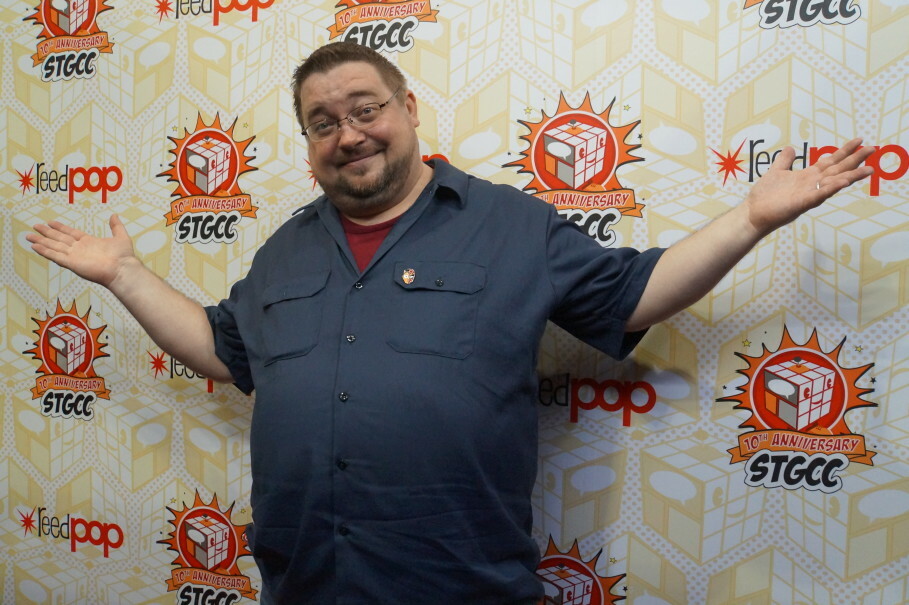Having Indonesia-made heroes on board the Marvel universe is a possibility, according to Chester Bror Cebulski, Marvel vice president of international business development and brand management in Asia, who is also a talent scout traveling to conventions to review portfolios.
"We need to get some Indonesian superheroes into the Marvel universe. If people came to us with some good ideas, we'd be more than happy to do that," Cebulski told the Jakarta Globe on the sidelines of the Singapore Toy, Game and Comic Convention on Saturday (10/09).
He added that Marvel had been creating local content across Asia, while there are already a handful of Indonesians working for Marvel, such as Ario Anindito and Jessica Kholinne, so it is not a long shot if any of them or other budding artists want to pitch Indonesian local superheroes to Marvel.

"We're creating some local content in Japan. We just created three new local superheroes in an anime show. We're doing some original Chinese Marvel comics. If there was an Indonesian artist or writer team or publisher who wanted to work with us to create something along those lines, we'd be very welcoming to have an Indonesian hero or heroes in the Marvel universe," he added.
Cebulski said Indonesia is very close to his heart, because he used to stay here for a few years when his wife was a student. He was also a guest and portfolio reviewer at the 2014 Indonesia Comic Con.
Though Indonesia's local comic scene is still overshadowed by Japanese manga and American comic books and graphic novels, Cebulski said he was impressed by the country's comic artists, because of their self-reliance.

"We have a great collection of artists who are working for Marvel from Indonesia as a whole, mostly Jakarta. The thing I love about a lot of the artists in Indonesia is that they're not focusing on just one discipline. […] most of the people I hired are artists who do everything from the start to the finish. They'll pencil, ink, then color. They do everything themselves, so it's almost as if they're not comic book artists. They're artists who draw comic books," Cebulski said.
Other than Indonesia, he is also impressed by the comic art scene in Singapore, where he saw a mix of influences from American style, Japanese manga, Korean webtoons and local art styles. The fact that there are more female artists submitting portfolios adds more diversity to the mix.
"They're bringing different touches from shoujo manga, or more attention to detail in facial expressions and body language. They draw the characters a little less muscular, or sexy, which is always fascinating for me to see," he said.
Dos and Don'ts of Portfolio Submission
In portfolio auditions, Cebulski said he does not have any numbers in mind when selecting portfolios. He could choose only one out of 50 submissions, or four out of just 15.
"It's just completely by gut and by what the artists send in," he said.
He usually looks for something unique and different, not only in the superhero genre, which is why he advised budding artists not to be scared or shy to submit their ideas.
"It's not limited to, let's say, we just want to accept samples of superhero comics. If you do a romance, Western, or sci-fi comics, show it to Marvel. We love to see that kind of stuff. We know what we need. While you might not think it's right for us, it could be right for us," Cebulski said.
A tip he shared for artists is not to just submit pinups or covers, but also sequential pages containing a mix of action scenes and "quiet" scenes.
"People will think 'I'm really gonna turn in pages of heroes fighting villains.' No, we also want to see that quiet scene where Peter Parker takes M. J. on a date. We want to see how you draw a real-life scene of them holding hands, them at dinner and them walking home. We really want to see a creative world that has the quiet moments as well as those superhero shots," he added.
Cebulski has worked at Marvel since the company was in still financial trouble in the 1990s. His love for comic books stems from when he was a child. He said he fell in love with "X-Men #120," published in 1963, which he picked up from a spinner rack to distract himself while doing an activity he dreaded: getting a haircut.
He admitted that though his parents had supported his dream to work in the comic book industry from the start, he is not good at drawing. He started at Marvel as a writer, then an editor, before joining top-level management. His works include three installments of Marvel Fairy Tales: "X-Men Fairy Tales," "Spider-Man Fairy Tales" and "Avengers Fairy Tales."
Source : The Jakarta Globe



















